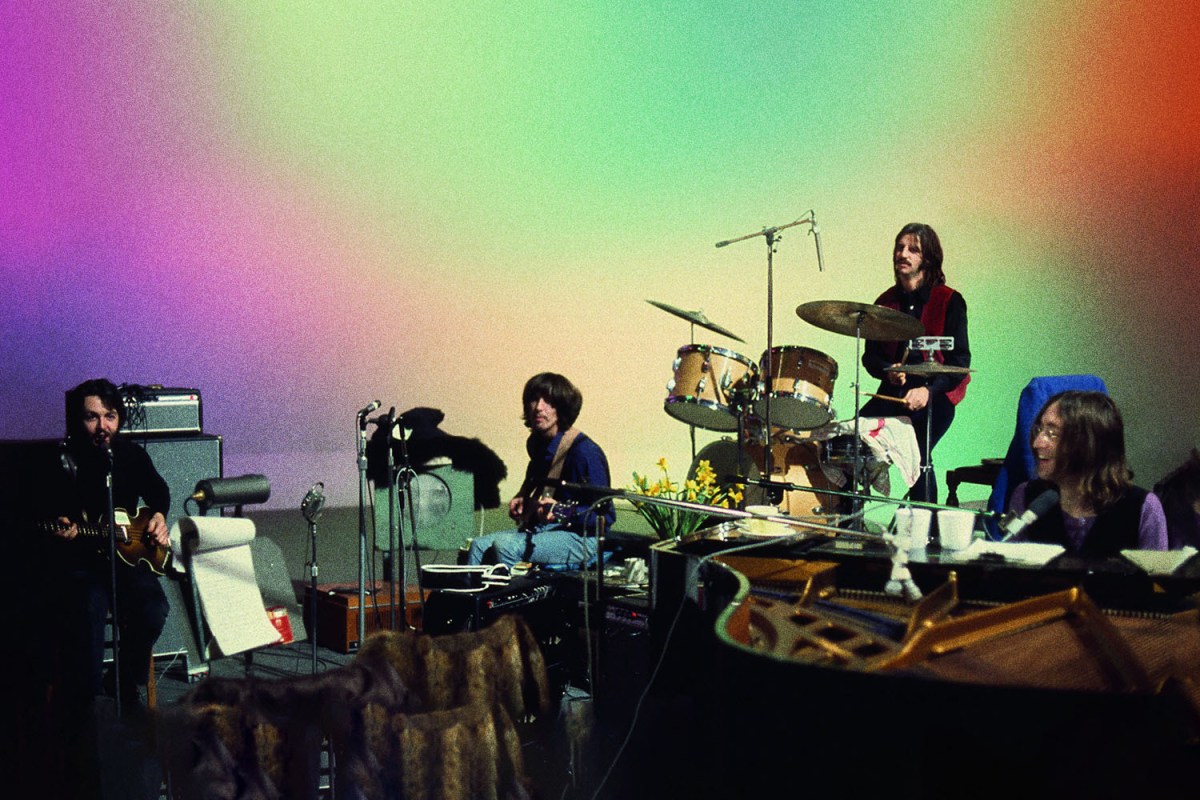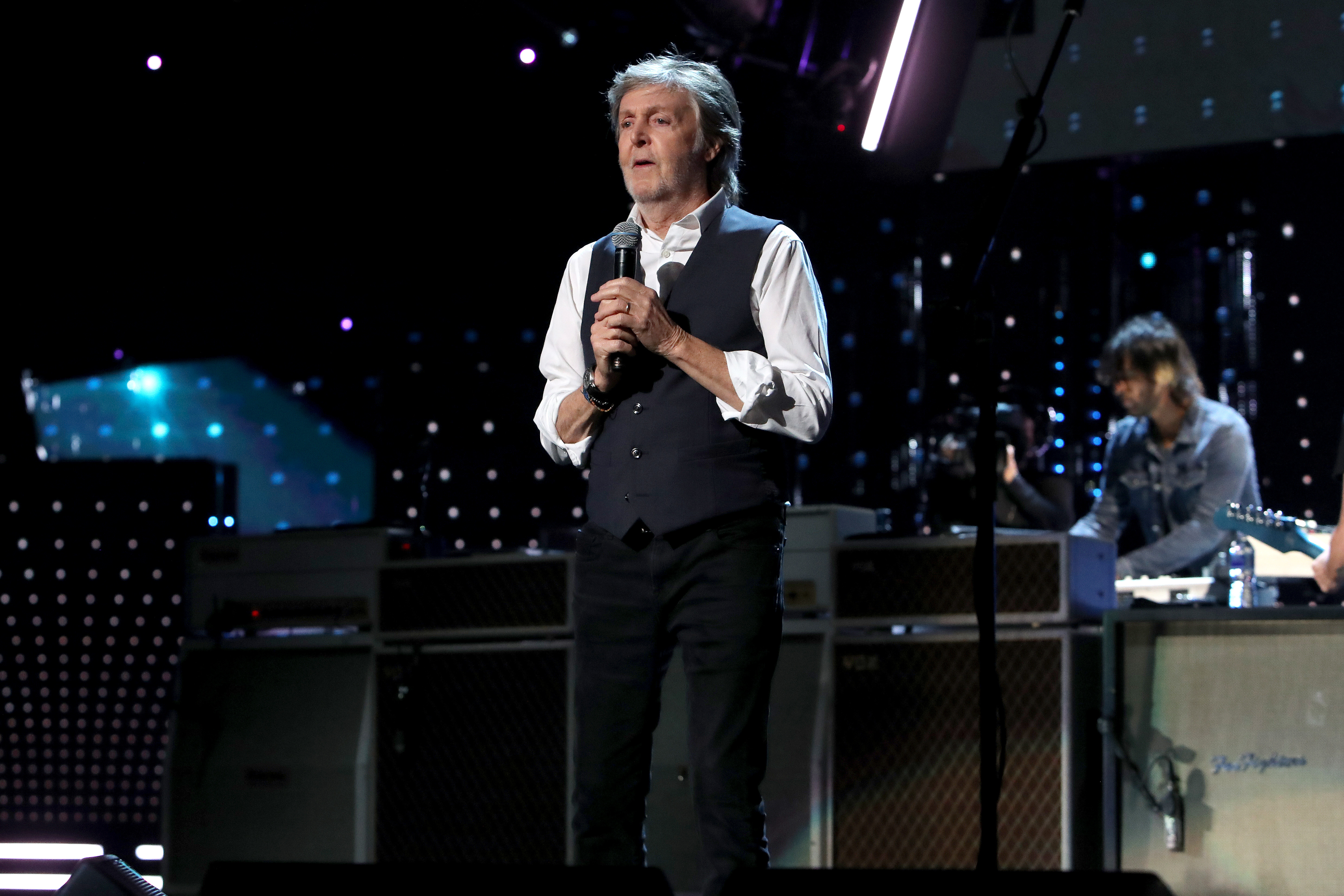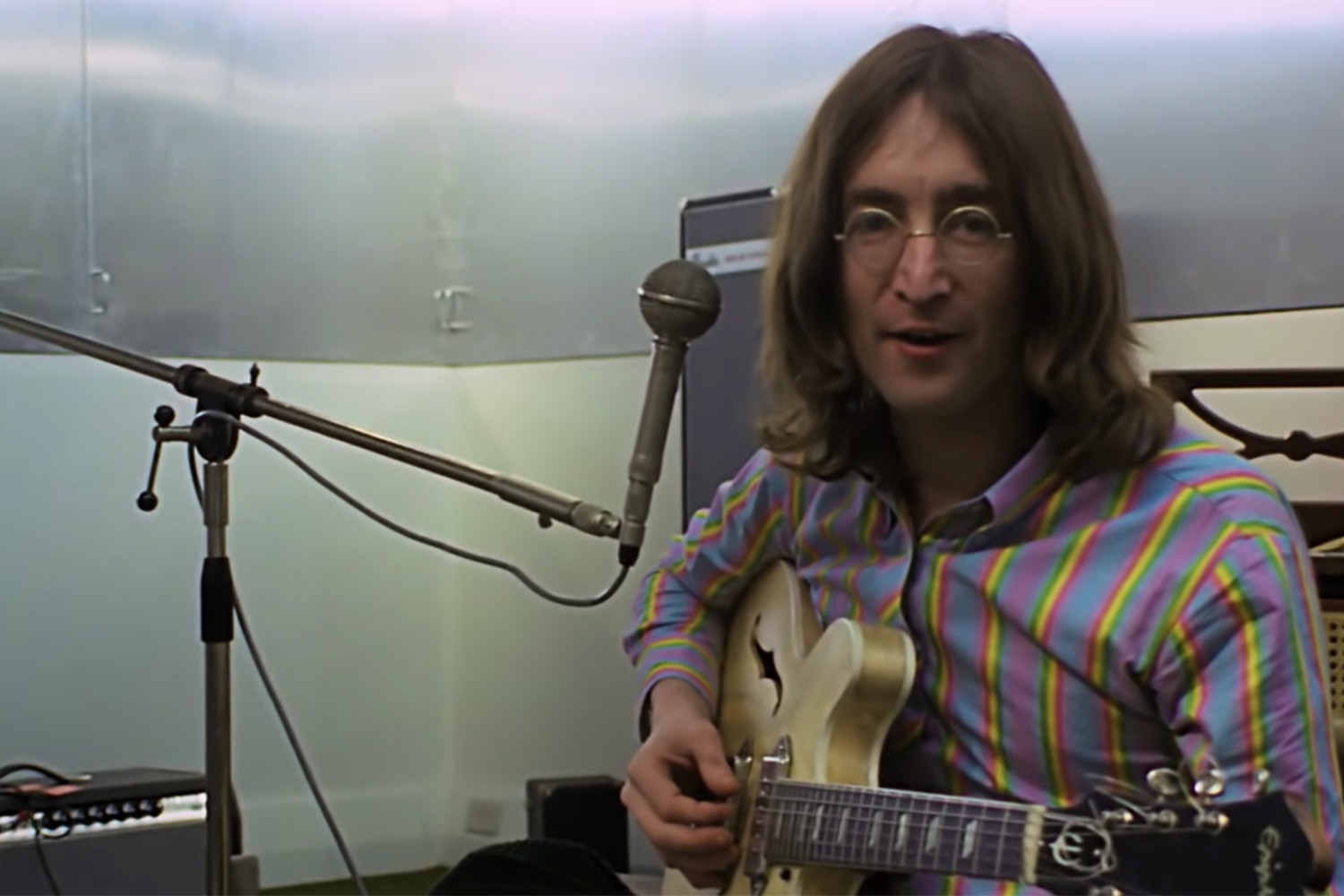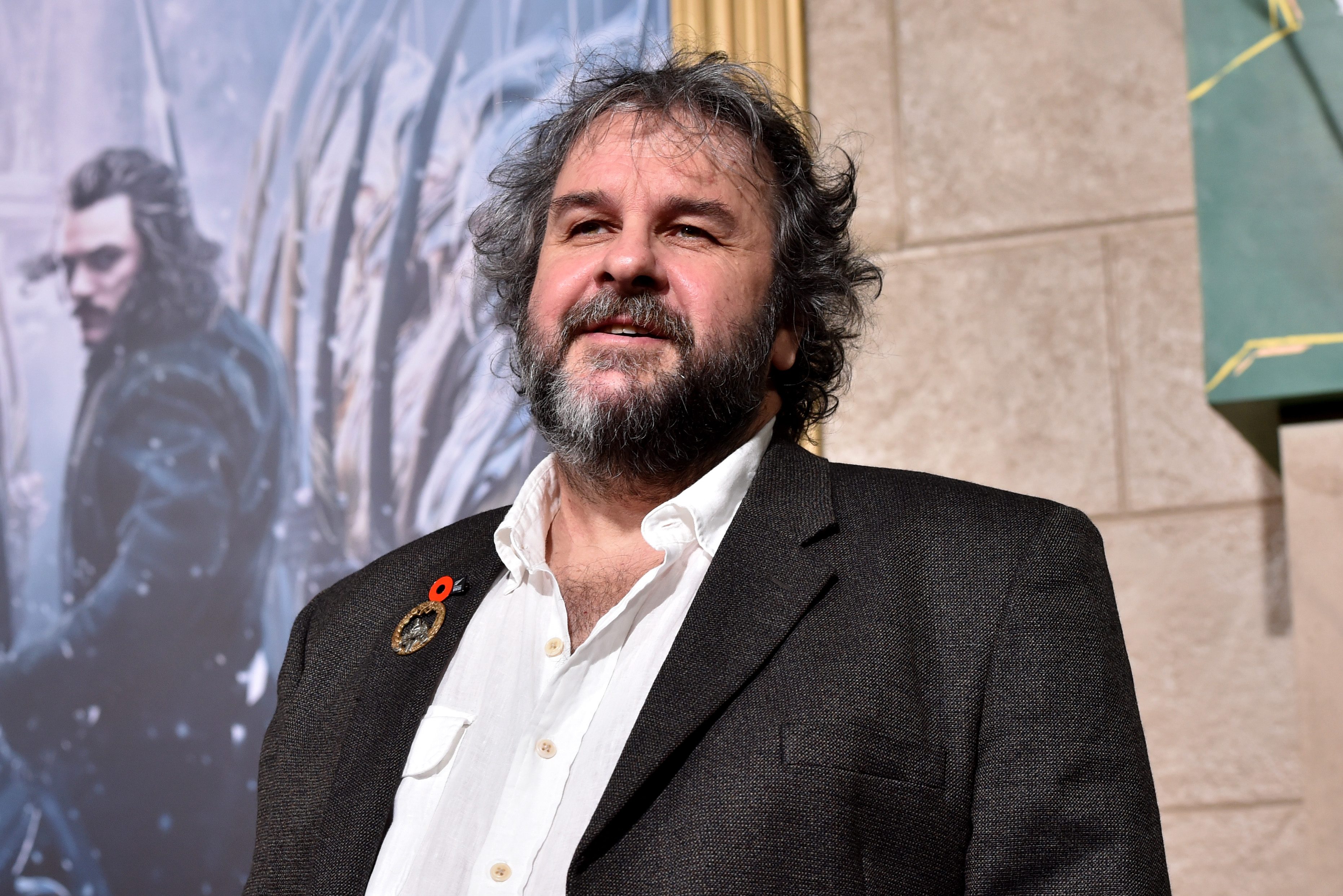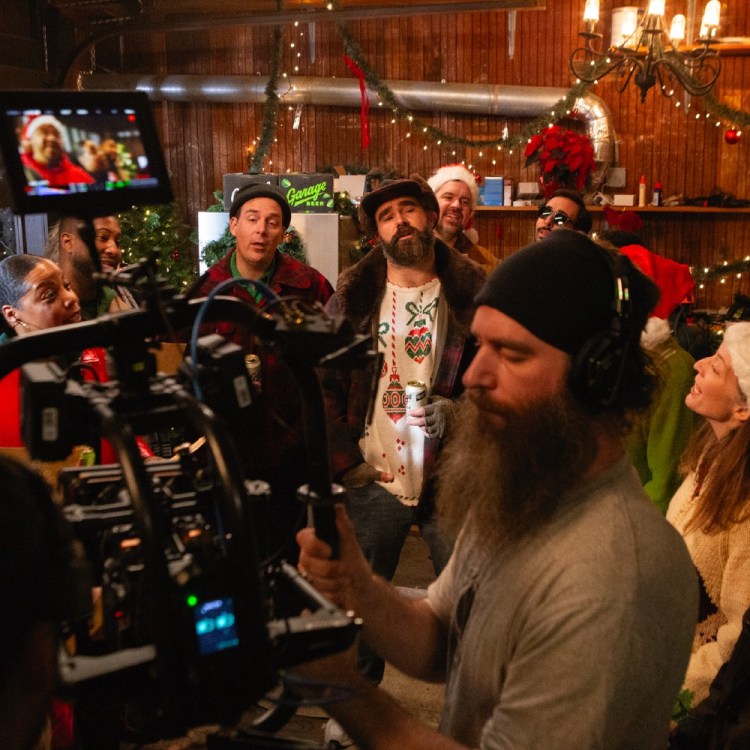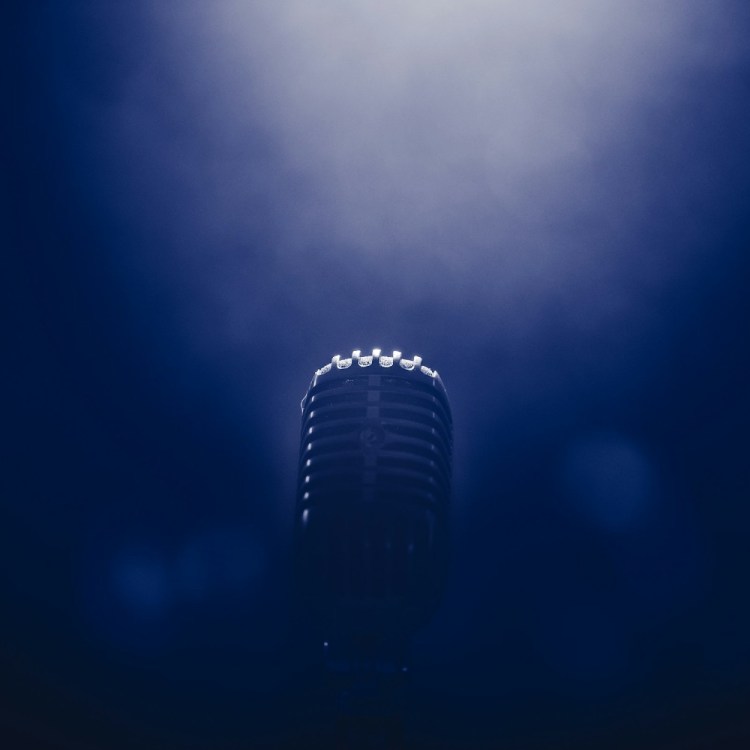When Peter Jackson’s new docuseries The Beatles: Get Back launches on Disney+ this Thursday, his three-part, six-hour deep dive into the making of the Beatles’ Let It Be album will redefine the fractious period in the band’s history for even the most diehard armchair historians, while also giving a stunningly intimate look into the creative processes of arguably the greatest collaborative relationship of the last 100 years.
“I was always moaning about the original film, because there was no real joy in it,” Ringo Starr recalls of the original 1970 documentary film Let It Be, released just weeks after news that the Beatles had split had hit the press. “I think everyone will enjoy Get Back, though, because you get to see this band work really hard and go through emotional ups and downs to get to where we got in the end. And we did get there. Every time.”
As even most casual fans know, the Let It Be film and album were salvaged from the ashes of Paul McCartney’s idea for The Beatles to “get back,” literally, to their roots, by writing and recording a new album, culminating with a live television event, performed in a small London club (or the QE2, an amphitheater in Libya, or some other suitably fantastic locale). With John Lennon more interested in his blossoming relationship with Yoko Ono and dabbling in heroin, George Harrison finally at a breaking point over his second-class status in the group after visiting Bob Dylan and the Band in Woodstock over the holiday break and being treated with the respect he no doubt felt he deserved, and even the always affable Starr himself frustrated by the ever-increasing tensions between the Fab Four and pouring more of his creative efforts into acting, McCartney had become the de facto leader of the Beatles, a role he’d filled to an increasing degree since manager Brian Epstein’s death in August 1967.
“It was always Paul who would want to get back to work,” Starr tells InsideHook. “I lived near John, and so I’d be at his place, lounging and having a bit of a smoke in the garden, and the phone would ring. We’d know even before we answered that it was Paul, saying, ‘C’mon, let’s get in the studio and make a new record.’”
For this latest venture, the band turned to a familiar face.
“I got the job because I’d directed Ready Steady Go, and then the ‘Paperback Writer’ and ‘Rain’ promo films, and finally the ‘Revolution’ and ‘Hey Jude’ promo films, not long before we shot Let It Be,” the director Michael Lindsay-Hogg, who shot the nearly 60 hours of film that Peter Jackson used to shape the Get Back miniseries, recalled a few years ago. “‘Hey Jude,’ in particular, was in front of an audience, and I think they quite liked that experience, so out of that came the idea to film them rehearsing the songs for a television special and then to do a show of all-new material in front of a live audience. I thought it would be an easy job.”
In fact, the long hours, which began in early January 1969 on a cold soundstage outside of London at the very un-rock-and-roll hour of 10 a.m. each day, frayed the patience of everyone involved. And with the band in tatters by the time Let It Be was finally nearing completion, no one in the Beatles’ camp seemed to care enough to step in to even attempt to salvage what by then had come to be a documentary chronicling the band’s breakup.
Still, Lindsay-Hogg was surprised by the eventual reaction to the film.
“It really wasn’t a bad experience making Let It Be,” he recalls today. “But partly because of the way the band were treating each other in the press at the time, I think, people saw it as very negative.”
“The history was always very negative,” adds Giles Martin, George Martin’s son and the Beatles’ go-to producer since 2006’s LOVE remix album. “Paul hated the finished product, and the album came out when they were suing each other.”
“It was all based on this little downer incident,” says Starr, referring to a fight between George Harrison and Paul McCartney caught on film and much discussed in the wake of the release of Let It Be. “But our company, Apple, had the unused footage from the documentary, and we were blessed that Peter Jackson took it on and put it together to make it different. Peter Jackson is our hero. He’s done a great job.”
What fans now get is context. With Jackson’s Get Back clocking in at more than four times the length of the original film, we now see both the ups and the downs, like the infamous “downer incident” from Let It Be that Starr referred to, where George Harrison and Paul McCartney spar over what Harrison should — or perhaps should not — play on one of the new songs. The scene, which was barely a few minutes long in the original film, now clocks in at over 10 minutes. It still shows the old school friends, who had been through so much together by that stage, going at it, of course, but it also shows that it was merely a moment of tension in a persistently stressful creative situation.
“Yeah, it’s a little longer now,” Starr says with a laugh. “But that’s just how it was: four guys in a room, you know? You’re bound to have a few ups and downs.”
Conversely, in Get Back, we also see the titular track evolve from McCartney’s germ of an idea to a lighthearted jam and, finally, a Beatles classic.
But Michael Lindsay-Hogg says that if anything in the original film is a key to understanding what the new docuseries is like, it’s the concert at the end of Let It Be, performed on the rooftop of The Beatles’ Apple Corps headquarters.
“Once I got them on the roof — which that was the hard part, because they didn’t really make up their minds until they were standing down in the little cubbyhole of a room about to go on the roof — they were great,” he recalls. “All that had been going on before, them not getting on or them having spats, like people who work together often do, and [once] they started really playing and they knew there was a crowd down below, they were 16 again.”
“The roof gig is now, I think, 43 minutes long,” Starr says of the Beatles’ final, famous performance, now seen in full in Get Back. “It was eight-and-a-half minutes in the original film.”
As arresting as the scene was in the original film, the new, extended version is now proof positive of how remarkable the Beatles were as a live band — three years off the road or not — no matter the January chill or ramshackle, makeshift setup on the roof of their London HQ.
“Always, the Beatles were going to go to Turkey somewhere, or up Everest, or in a desert or Hawaii, and then, suddenly, ‘Let’s just walk across the road,’” Starr says with a laugh, remembering the way the band ended up playing the concert at the finale of Get Back, which is broken up by London bobbies responding to noise complaints from other tenants in the bustling business district. “With this one, it was just, ‘Let’s do it on the roof.’ And that’s what we did. And it was great. I mean, the police played a huge part. Not that they did anything. But they were moaning at us. And they look really silly in the film now.”
The Let It Be album, too, has been given a fresh coat of paint, courtesy of Giles Martin, who has now remixed Sgt. Pepper, the White Album and Abbey Road, with a remix of the album proper. The box set also includes the original mix of the album by production legend Glyn Johns that was rejected by the band, a host of jams and outtakes (many of which draw a through line to Abbey Road, which was actually recorded after Let It Be, though released before it) and the individual Beatles’ solo recordings.
“It’s an amazing document of their creative process,” Martin says. “I’d never really thought about that before, because the finished album is such a sort of hodge-podge, with the rooftop gig and the Savile Row [Apple Studios] recordings, and then others from Abbey Road [Studios]. Phil Spector made sense of that, and hats off to him. Seriously.”
Originally compiled on relatively primitive equipment by Spector, the often muddy, boxy-sounding original album has been given new life by Martin’s new mix. There’s also a gorgeous coffee table book full of photos by Ethan Russell and Linda McCartney, showing the band at work during the making of Let It Be and featuring transcripts of the hundreds of hours of audio captured by Lindsay-Hogg’s crew lovingly edited by writer John Harris.
But it’s Jackson’s Get Back, of course, that is the centerpiece of the new clutch of releases.
“They were a sensational rock-and roll-band,” says Lindsay-Hogg, and that really shines through in Get Back.
“They’d done eight hours a night in Hamburg,” he adds. “They’d been doing this since there were teenagers. And when they were actually playing — and creating — they were happy. They were connected. It was right in front of me and right in front of the cameras.”
There’s a playfulness throughout Get Back, but it also shows the Beatles at work, deep in the creative process, which alone makes it worth watching.
“We’re laughing and fooling around and we’re being musicians,” Starr says.
That fooling around got dialed back a bit, however, when Billy Preston — often dubbed “the Fifth Beatle” — joined the sessions to lay down some organ and electric piano parts.
“As you can see in the film, it was very casual,” Martin adds. “But when my dad would show up, he would have a piece of paper and would ask, ‘What are you actually doing?’ Because that’s how my dad was. And on the days that he was there, they’d do far more songs than the days he wasn’t. And when Billy Preston came along, they changed, because they suddenly had someone, apart from my dad, that they had to perform for.”
“They just loved Billy Preston,” Lindsay-Hogg agrees. “Everyone really rose to the occasion when he showed up. They loved playing together, but I do think he helped them remember how much they did.”
Starr says that Get Back finally sets the record straight about this period of Beatles history. Sure, it was the beginning of the end of our love affair with the greatest rock-and-roll group ever. But it also shows the intimacy and camaraderie that made everything the Beatles accomplished possible. Get Back, he says, now tells the full story.
“Now it’s got a start, a middle and a finish,” he explains. “The start is very slow, and then we get into creating, and then we’re at it and then we’re out. I love it. But I’m in it, of course, so six hours is never long enough.”
All joking aside, Get Back is a long film, but a hugely rewarding historical document, too. While the newly remixed album and coffee table book may be more easily digestible for the casual fan — and easier holiday gifts, for sure — Jackson has brought the young Beatles to life once more, laughing, fighting and, best of all, creating together.
“The Beatles, I think, do represent a kind of joy,” Lindsay-Hogg says. “They represent a connection with each other, but they also represent wanting to connect with us. They know what an extraordinary thing has happened to them, but also, they know they deserved it, insofar as anyone ever deserved anything. But, most of all, I think they came along at a certain time when the world was waiting for them.”
This article appeared in an InsideHook newsletter. Sign up for free to get more on travel, wellness, style, drinking, and culture.
